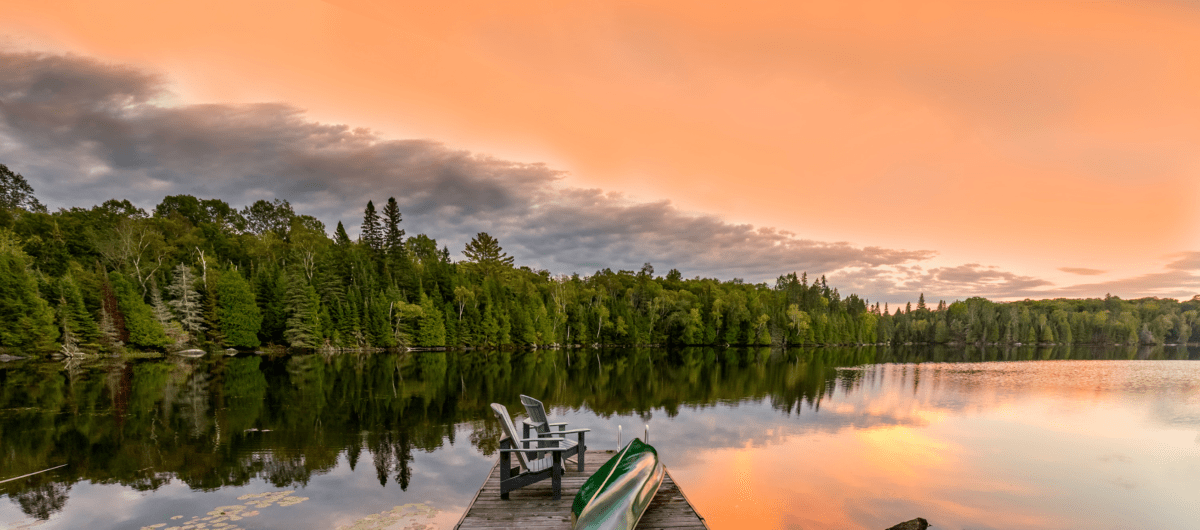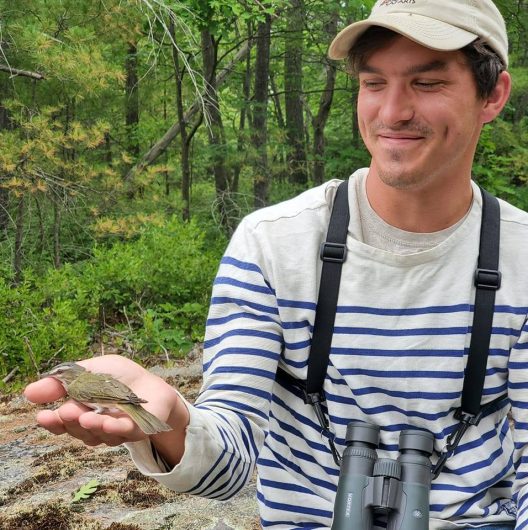Our Changing Watershed: What is an Ecosystem?
Muskoka Watershed Council works to answer that question, which is easier to ask than to answer.
By Aaron Rusak.

What is an ecosystem?
Answering this question seems relatively simple, but a widely accepted definition for the term can be hard to come by. A simplified definition is an ecosystem is a natural area with similar ecological systems and biotic and abiotic factors present, like a coniferous forest or meadow marsh — a group of interrelated organisms and their interactions with their physical environment.
This system takes in energy from the sun, takes inorganic materials and nutrients, and moves them through a food web of increasingly complex organisms. However, one may have to look at other variables or factors to identify an ecosystem in a functional way. Do we define an ecosystem based on size, on the general climatic and geologic conditions that prevail, or on the assemblages of species that are common or unique to an area?
Humans tend to classify things in how they pertain to us and how we perceive them. We think about ecosystems on a large scale, qualifying things like watersheds, fields, forests, swamps, and more. We assume in many cases that all ecosystems are created equal, painting these different ecosystems with a broad brush for simplicity’s sake.
Whether this is the correct approach is probably up for debate, but it’s useful to note these differences when we’re talking about conservation, especially regarding species at risk. If we’re talking about land management decisions to protect bobolinks, should we not be classifying ecosystems in a way that makes sense for bobolinks and not humans?
That meshes well with the importance of composition in an ecosystem — the makeup of flora and fauna. Again, our processes such as “ecological land classification” parcel ecosystems into broad boxes, describing coniferous forests, shrub swamps, graminoid fens and more. These broad brush strokes don’t tell the true story of an ecosystem, and can undervalue traits or species in an ecosystem that may be vital to other species.
A good example could be that of the Ebony Boghaunter, a provincially significant dragonfly species. This species likes bogs, fens, or swamps with sphagnum pools scattered throughout the ecosystem; however, it’s not found in every area of suitable habitat within its range. Is this due to a lack of data or is the generalist way that we discuss ecosystems and habitats just not specific or detailed enough for us to understand what it views as important?
Although we don’t have all the answers, there’s plenty of work being done to help fill in some of these gaps. The Muskoka Watershed Council has engaged with the District of Muskoka to look at integrated watershed management, a tool that may be able to answer some of these questions and qualify the ecosystems found in Muskoka in a meaningful way.
Foundational species data is being collected, with projects like Benthic Invertebrate Sampling, Marsh Monitoring Programs, and the Breeding Bird Atlas of Ontario providing large, local data sets to start attempting to understand the significance and variety of flora and fauna found in our ecosystems. Tools like iNaturalist and eBird allow anyone to submit photos of species they encounter for identification and addition into many projects across the watershed.
It may be necessary to define and classify something to understand it, but is that necessary in order to protect it? The ecosystem can be defined with a range of scales and should be respected and managed as such and, as inhabitants of an ecosystem, we need to look at ways in which we can preserve and protect it for all species.

This article is one of Muskoka Watershed Council’s summer 2023 series on “Our Changing Watershed” in The Muskokan newspaper. This week’s article was contributed by Aaron Rusak, an avid naturalist, vice-chair of the Muskoka Watershed Council and protected areas manager for the Georgian Bay Land Trust. Series editor is Dr. Neil Hutchinson, a retired aquatic scientist, Bracebridge resident and director, Muskoka Watershed Council.
